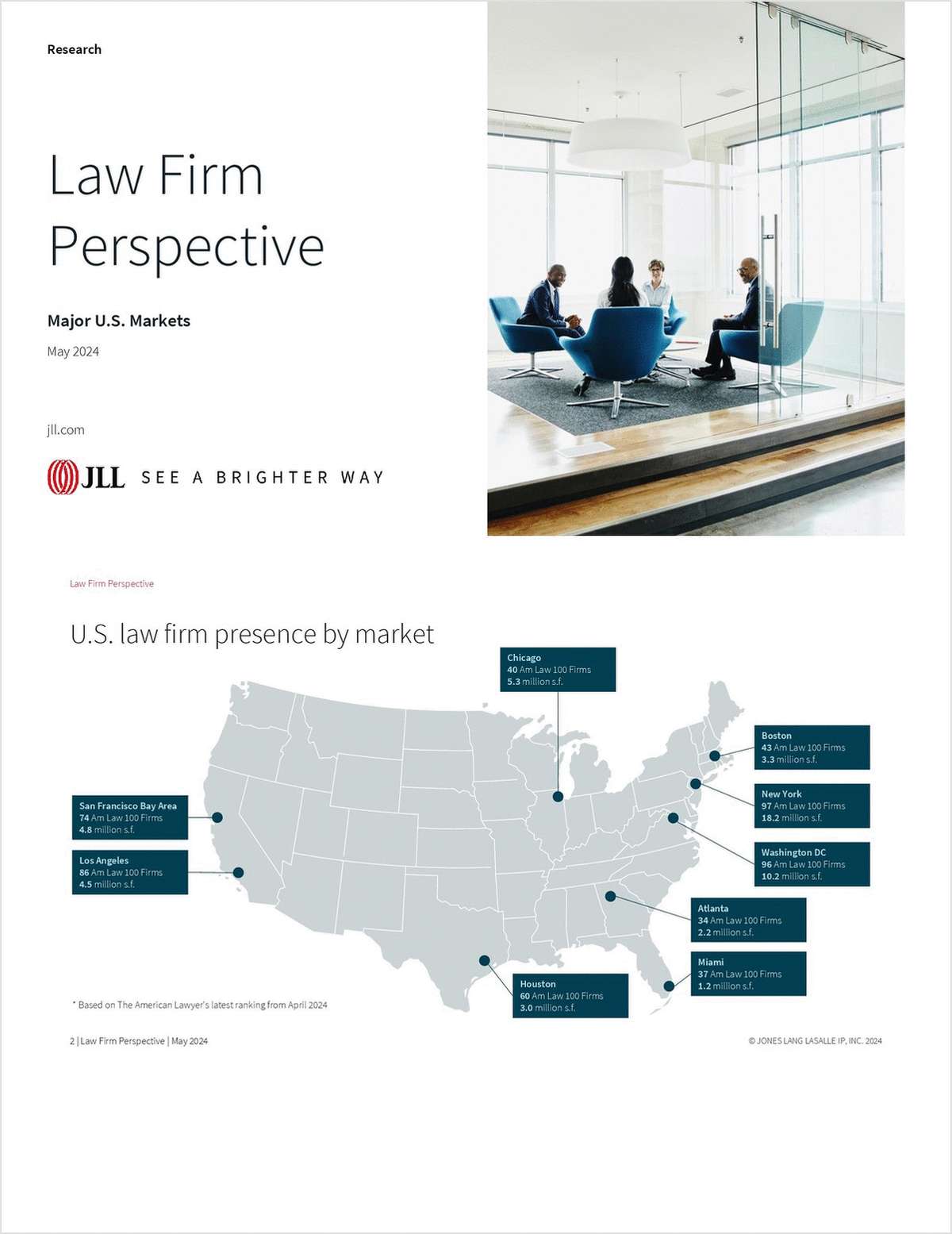Talcum Powder's Alleged Cancer Link Spurs Litigation
What could be more harmless than baby powder? But some studies have connected the use of talc products to ovarian cancer. Companies are lawyering up.
March 30, 2015 at 02:36 AM
6 minute read
In the 1970s, a pair of doctors at Mount Sinai Hospital in New York tested 21 body and baby powders from local stores. In 1976 they published a study reporting that 10 of those products contained asbestiform fibers, with Colgate-Palmolive's Cashmere Bouquet body powder showing some of the highest levels. They called for regulatory action and recommended more studies of the possible health hazards of these products.
Despite the plaintiffs bar's attraction to asbestos litigation, this study didn't trigger a wave of cases by people who had used consumer talc products.
Now, after lying dormant for four decades, talc litigation has emerged as a threat for Colgate-Palmolive Company, Johnson & Johnson, and others in the talcum powder business. The plaintiffs bar, searching for a new front for asbestos lawsuits, is increasingly interested in talc. Mark Lanier's firm, for instance, has started representing plaintiffs who claim they got ovarian cancer from talc. Other lawsuits contend that plaintiffs developed mesothelioma from inhaling talc that contained asbestos.
NOT FOR REPRINT
© 2024 ALM Global, LLC, All Rights Reserved. Request academic re-use from www.copyright.com. All other uses, submit a request to [email protected]. For more information visit Asset & Logo Licensing.
You Might Like
View AllTrending Stories
- 1The Law Firm Disrupted: Playing the Talent Game to Win
- 2GlaxoSmithKline Settles Most Zantac Lawsuits for $2.2B
- 3BD Settles Thousands of Bard Hernia Mesh Lawsuits
- 4Preparing Your Law Firm for 2025: Smart Ways to Embrace AI & Other Technologies
- 5Inside Track: Late-Career In-House Leaders Offer Words to Live by
Who Got The Work
Caroline Pignatelli of Cooley has entered an appearance for law firm Cooley, partner Matt Hallinan, retired partner Michael Tu and a pair of Cooley associates in a pending fraud lawsuit related to the firm's representation of startup company Carbon IQ and founder Benjamin Cantey. The case, filed Sept. 26 in New Jersey District Court by the DalCortivo Law Offices on behalf of Gould Ventures and member Jason Gould, contends that the defendants deliberately or recklessly concealed critical information from the plaintiffs regarding fraud allegations against Cantey. Gould claims that he would not have accepted a position on Carbon IQ's board of directors or made a 2022 investment in the company if the fraud allegations had been disclosed. The case, assigned to U.S. District Judge Robert Kirsch, is 3:24-cv-09485, Gould Ventures, LLC et al v. Cooley, LLP et al.
Who Got The Work
Attorneys from Skadden, Arps, Slate, Meagher & Flom have stepped in to represent PDD Holdings, the operator of online marketplaces Pinduoduo and Temu, in a pending securities class action. The case, filed Sept. 30 in New York Eastern District Court by Labaton Keller Sucharow and VanOverbeke, Michaud & Timmony, contends that the defendants concealed information that rendered the growth of PDD unsustainable and posed substantial risks to PDD’s business, including merchant policies that made it unprofitable for vendors to do business on PDD platforms; malware issues on PDD applications; and PDD’s failure to implement effective compliance systems. The case, assigned to U.S. District Judge Pamela K. Chen, is 1:24-cv-06881, Macomb County Retiree Health Care Fund v. Pdd Holdings Inc. et al.
Who Got The Work
Robert A. Fumerton, Scott D. Musoff, Michael C. Griffin and Judith 'Judy' A. Flumenbaum of Skadden, Arps, Slate, Meagher & Flom have entered appearances for PDD Holdings f/k/a Pinduoduo in a pending securities class action. The suit, filed Oct. 1 in New York Eastern District Court by the Rosen Law Firm, contends that the defendants concealed the company's sale of goods likely produced by forced labor and its efforts to install malware on users' phones, exacerbating the risk of regulatory and public scrutiny. The case, assigned to U.S. Magistrate Judge Joseph A. Marutollo, is 1:24-cv-06950, Shaw v. Pdd Holdings Inc. et al.
Who Got The Work
Nicholas M. DePalma and Christian R. Schreiber of Venable have stepped in to represent CP Management Services, CRS RB4 Holdings and other defendants in a pending breach-of-contract lawsuit. The suit was filed Aug. 30 in Virginia Eastern District Court by Greenberg Traurig on behalf of Daito Kentaku USA. The case, assigned to U.S. District Judge Claude M. Hilton, is 1:24-cv-01538, Daito Kentaku USA, LLC v. Comstock Partners, LC.
Who Got The Work
Wyatt, Tarrant & Combs partner Andrew J. Pulliam has entered an appearance for Steve Jensen in a pending breach-of-contract lawsuit. The action, filed Aug. 30 in Tennessee Middle District Court by the Law Office of Perry A. Craft on behalf of Timothy Robins, accuses the defendant of writing a worthless check for over $94,000 for the sale of auctioned goods. The case, assigned to U.S. District Judge Eli J. Richardson, is 3:24-cv-01064, Robins v. Jensen et al.
Featured Firms
Law Offices of Gary Martin Hays & Associates, P.C.
(470) 294-1674
Law Offices of Mark E. Salomone
(857) 444-6468
Smith & Hassler
(713) 739-1250










